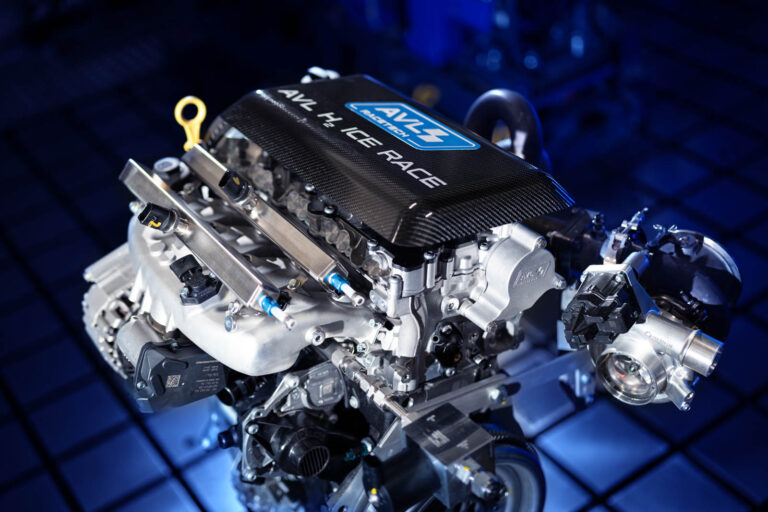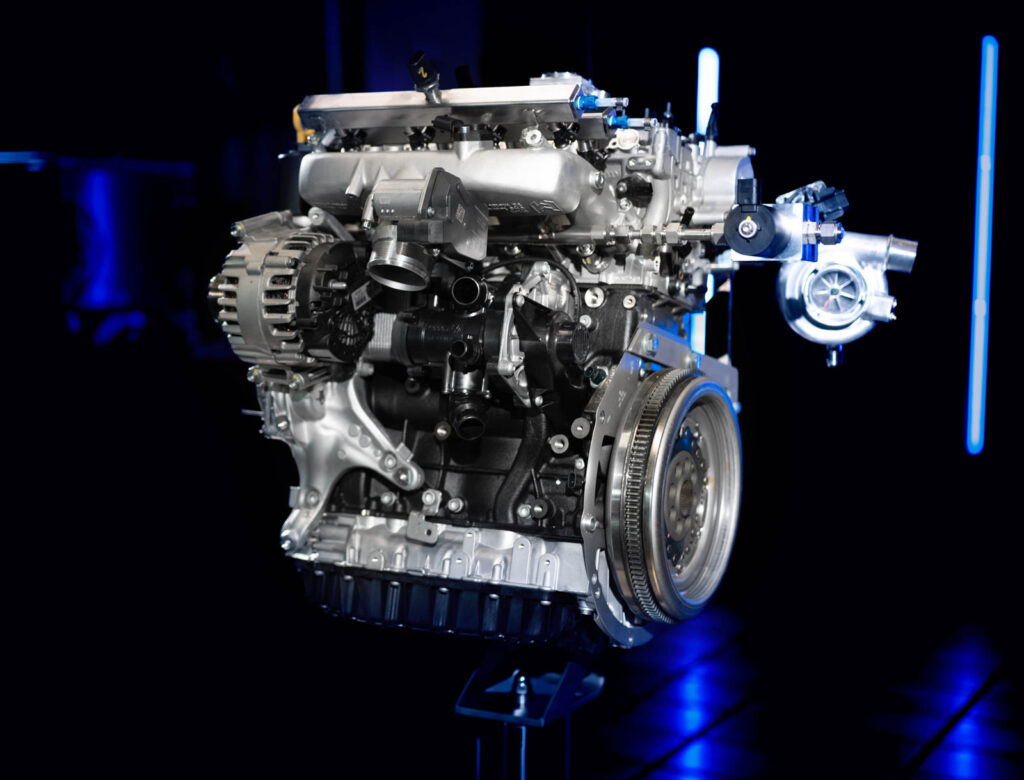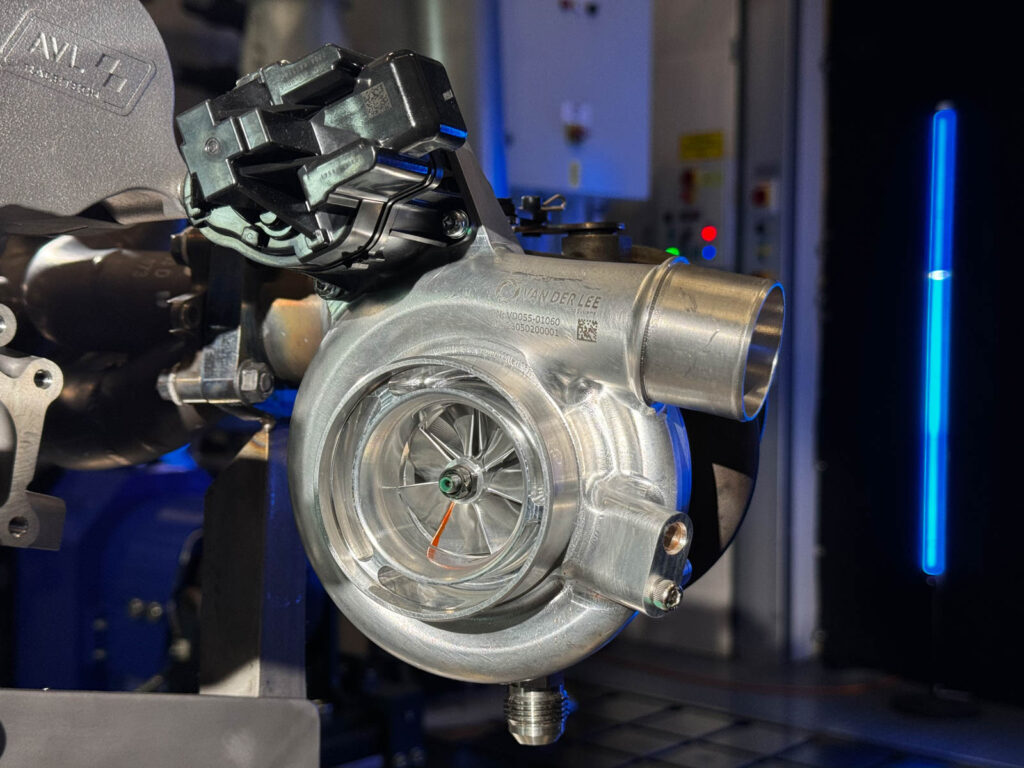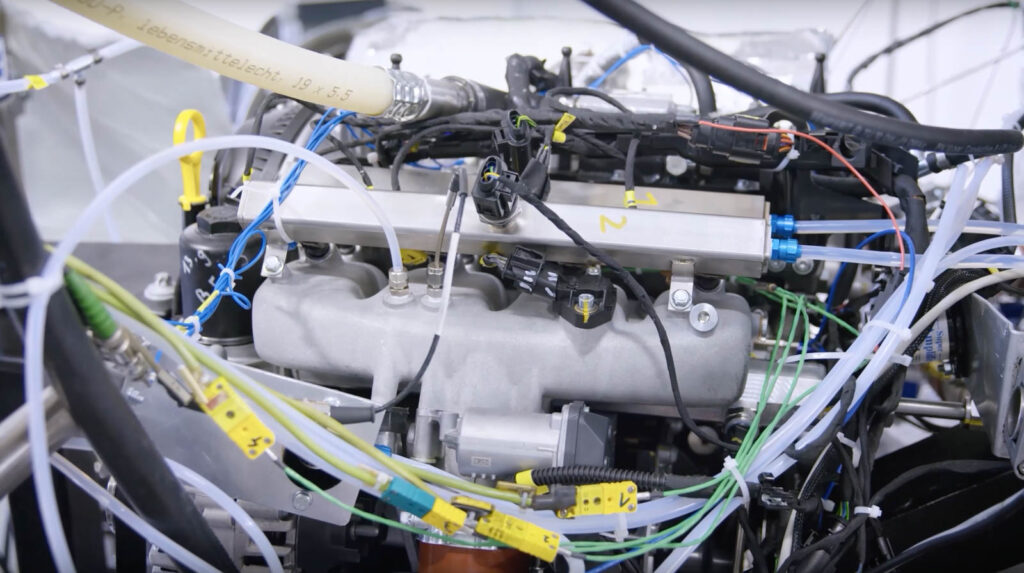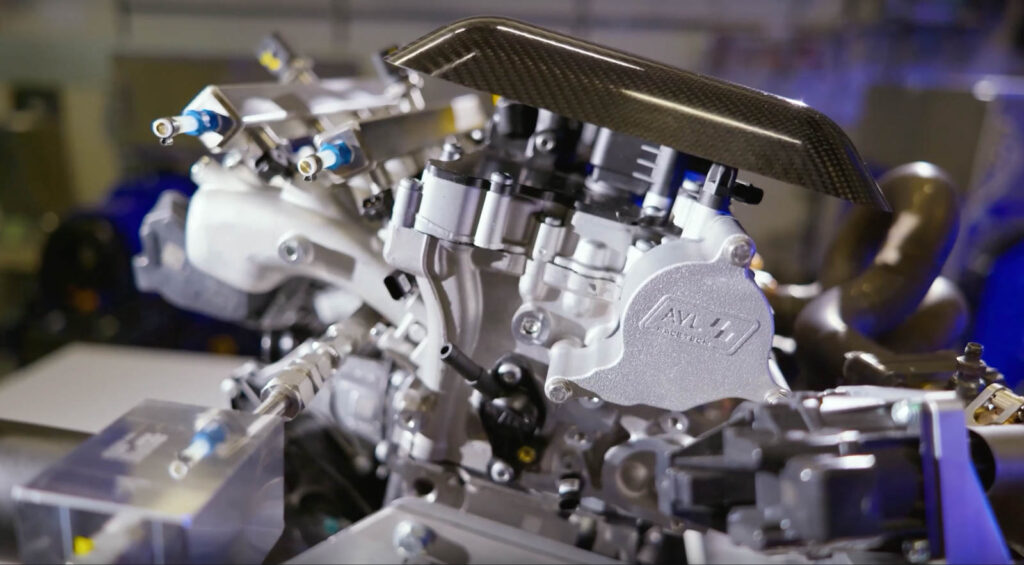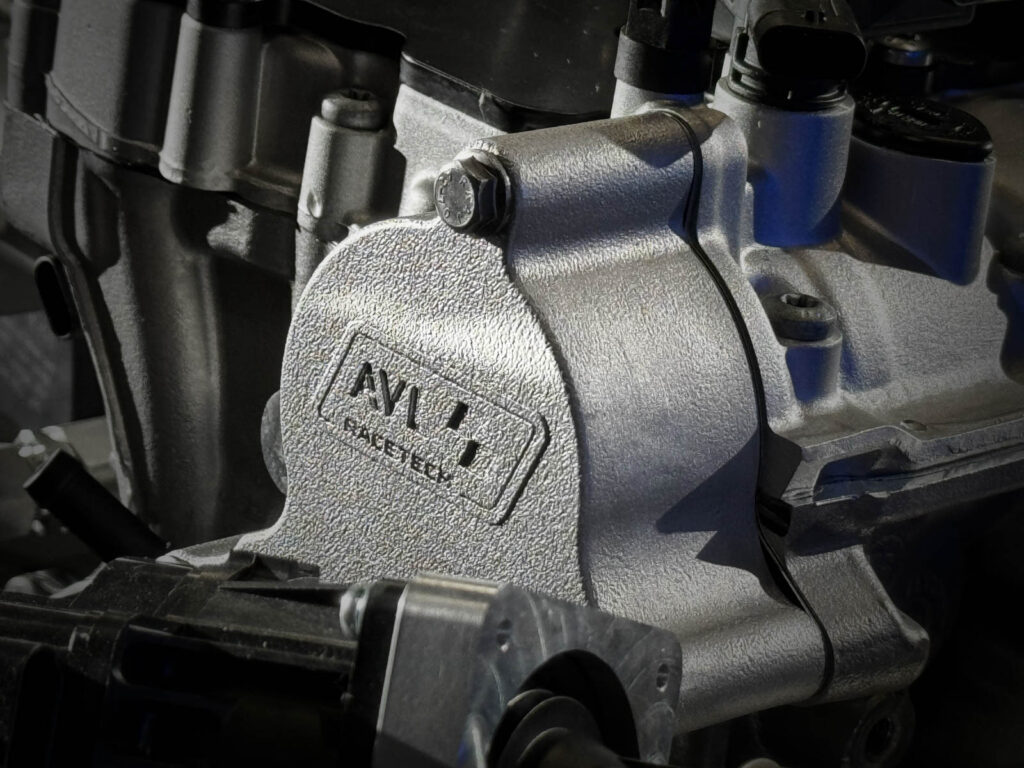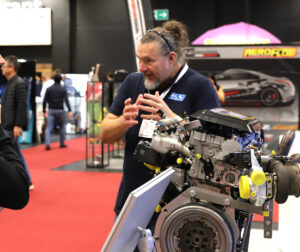
Hydrogen may not be flavor of the month for car makers, either in fuel cell or ICE form. Despite this, one area in which it will almost certainly play a key role in decarbonization is racing. The heat of competition is where AVL, best known for its test benches, measurement devices, simulation tools and a long history of engine development, hopes the engine shown here will come into play.
There is considerable discussion in the upper echelons of motorsport around the use of hydrogen; an H₂ class is due at Le Mans in 2027, accommodating both fuel cell and ICE, while Extreme H, an off-road race series, will arrive in 2025. However, it is the lower leagues that AVL Racetech, the motorsport arm of the company, is targeting with this effort. Specifically, classes based around the TCR rule set – touring cars based on roadgoing machines with 2.0-liter, production-based engines. Cost is a major driver in this category but, sooner or later, the current ICE engines could be outlawed in some regions. AVL feels H₂ can provide the answer: all the emotion of ICE without the emissions. It was against this backdrop that the performance targets for the engine were set: a power output of 300kW, 500Nm of torque,at a reasonable cost.
Compressed schedule
AVL’s Rene Heindl, senior development engineer for spark ignition engines, takes up the story: “The project has been completed in roughly one year. It was a real challenge, 300kW out of a two-liter engine, which is a huge output for a hydrogen engine, especially with the somewhat unconventional approach we have chosen – stoichiometric combustion of hydrogen.”
The engine is based around an existing production unit, with many of the mechanical components remaining stock, though there is some mixing and matching of components from the same engine family. In addition to simulation-based selection and replacement of some standard parts with motorsport-specific components, it is on the combustion system that AVL has concentrated its efforts, using direct injection of gaseous H2 coupled with a port-based water injection system.
While many H2 engines are developed with lean running in mind, AVL’s engine runs at a stoichiometric ratio to maximize efficiency. This choice was made in order to hit the 300kW power target without the need for expensive, bespoke turbocharging technology.
The air mass needed to achieve the target output with lean H2 combustion would have required a much greater mass airflow than could be obtained with a traditional, single-stage turbocharger. “You would need to redesign the entire engine to push the air needed through it,” says Heindl. “From the very beginning, we said we did not want any exotic turbocharging technology, which ruled out multistage systems and electrified turbos.”
Though using a stoichiometric ratio means it is possible to achieve similar levels of responsiveness from a hydrogen engine compared with gasoline – a very important consideration for racing applications – it does require what Heindl calls “moderation” of the combustion. “You need to calm down the combustion so that you do not heavily pre-ignite all the time.”
Enter the water injection system. The addition of water to the inlet charge helps to reduce the speed and temperature of combustion to manageable levels. EGR dilution could also be used to achieve this calming effect, but Heindl explains this approach is not appropriate for a racing application: “The advantage of water is that it can be done almost cycle by cycle and you can be very quick regulating the combustion. This is not possible with an EGR system; you can’t get the response.”
The water injection system relies on eight injectors, two per cylinder, with the water playing a dual role: moderating combustion in the cylinder while also helping to cool the charge via evaporation in the combustion chamber (there is also a charge air cooler between the turbo and intake manifold). Another factor in favor of stoichiometric combustion relates to the energy available to drive the turbocharger. “You need enthalpy in the turbocharger, you need to keep it revving. Stoichiometric combustion means there is more than enough hot gas to get that enthalpy,” says Heindl.
The timing and duration of the water injection can be varied depending on engine load and speed related to the amount needed to ensure combustion moderation. While the combustion system itself could also handle lean combustion to a certain extent, for the current phase of testing and development AVL has concentrated on a full stoichiometric approach with moderation, targeting the highest engine output possible and its 150kW/l goal.
Currently, the system is calibrated to ensure that pre-ignition is avoided with a good safety margin. However, there is further work that could be done on fine-tuning to reduce water consumption. “We tried to lay out the engine and components in such a way that in the future, with minor updates, we could run a bit leaner, use less water injection and still keep the transient response that is expected in racing,” Heindl remarks. It should also be noted that the total volume of water required for injection does not necessarily need to be carried on the vehicle, as H₂0 is the main by-product of combustion and potentially could be harvested from the exhaust gas for use for water injection at a later stage.
H2 specific
Even with combustion moderation, combustion anomalies such as pre-ignition are a major consideration with a hydrogen engine; thus, careful attention needs to be paid to potential hot spots or ignition sources.
For example, the ignition coils are units developed specifically for hydrogen use. “You cannot have any residual charge in the coils and have to avoid so-called ghost sparks, otherwise you might run into big problems with pre-ignition,” explains Heindl.
Similarly, the spark plugs must be specially designed, and this is an area where AVL is reluctant to divulge too much detail. However, Heindl reveals, “You cannot just pick the coldest plug, as you would do with a gasoline engine, if you expect high thermal loads. That’s not enough for hydrogen.”
Another challenge for AVL was finding hydrogen injectors that were up to the task. Though several manufacturers have prototype units on the market, Heindl points out that these are designed for heavy-duty engines and thus are not suitable for packaging within a compact IL4. “Everything available for passenger car engines are prototypes with insufficient mass flow, so we have contacted a supplier for development of injectors with a high enough mass flow for our needs. I don’t think that these currently exist anywhere other than on our engine,” says Heindl.
These injectors need to be able to provide the required flow to the cylinder but also currently still need to operate with the aid of external lubrication, which would normally be provided by the lubricating action of gasoline or diesel fuel. “Hydrogen has no lubrication ability. Even CNG carries a bit of oil because it comes from the [gas] grid and goes through compressor stations,” Heindl outlines, adding, “But hydrogen comes from the chemical industry and is completely pure. That is why the injectors have a dedicated lubrication system, but the suppliers are working to get rid of that need because bringing oil into the combustion chamber creates the perfect source for pre-ignition.”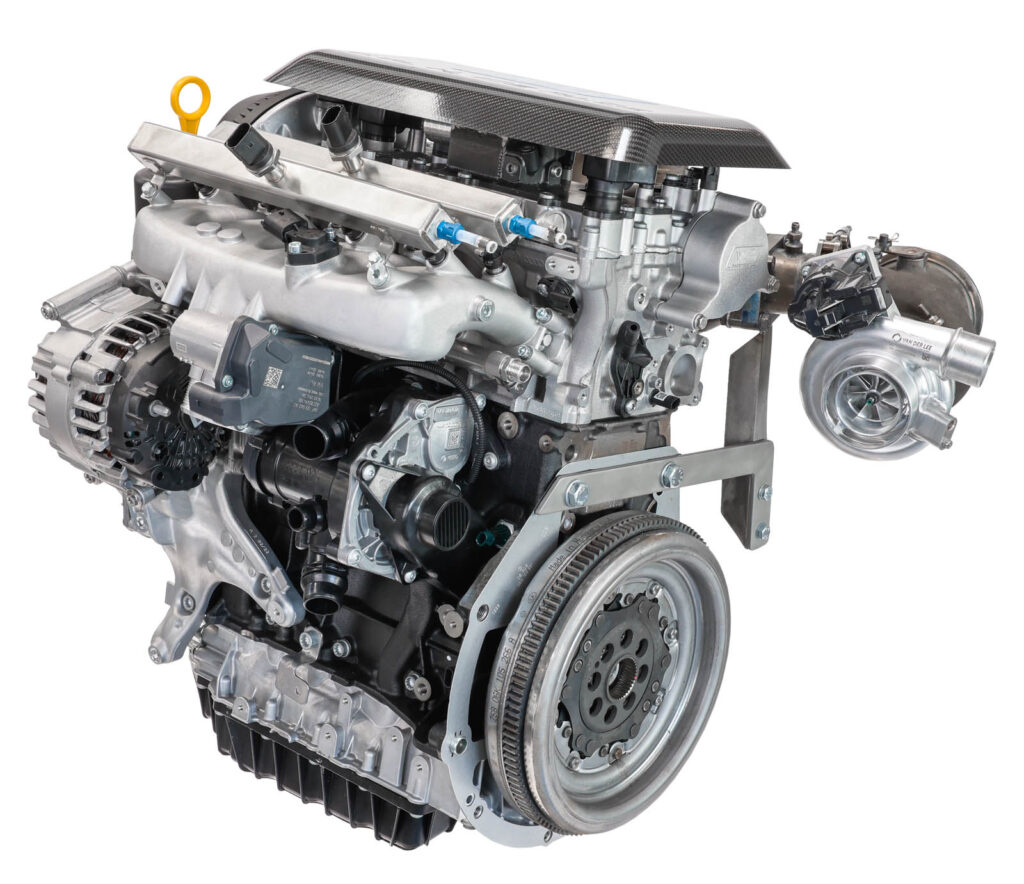
Similarly, to ensure long-term engine durability, developments are needed, for example, to the valve seats and valve materials, as well as the piston-to-bore interface, to operate in the stressful environment of even moderated hydrogen combustion. “That is a mechanical challenge that needs to be met if you want to go to the track or road. It needs to be addressed in conjunction with parts manufacturers. When we tested our engine, we definitely saw some wear on, for example, the valves. They endured the testing phase but for longer-term reliability it needs addressing,” summarizes Heindl.
Gas dynamics
Of course, the injection event is very different with gas from how it is with a liquid fuel injected in a spray. This means the dynamics within the combustion chamber are also unique, says Heindl. “Due to the low density of hydrogen, the injectors need a very big opening, with a large cross-section to deliver the correct amount of energy
to the combustion chamber. That means they have to be outward opening, unlike a gasoline injector, where you have multiple holes and can target your injection and adapt it to the aerodynamics of the incoming air.”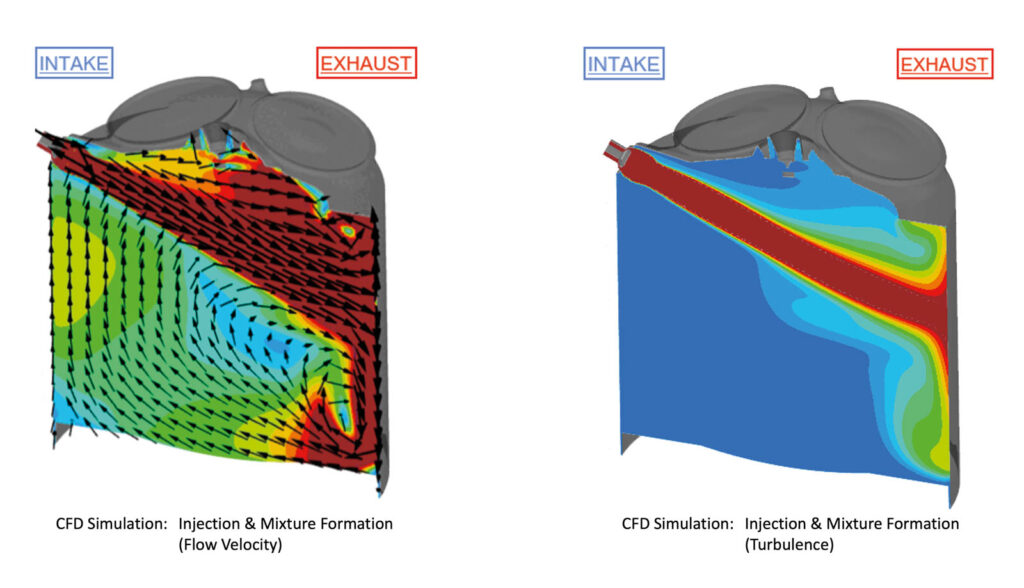
The dynamics of the incoming air have a notable, but not dominating, effect on the formation of the gas cone from the injector. According to Heindl, although the injector design would lead one to expect a broad cone pattern, there is a Coand˘a effect within the jet itself and between the jet and the combustion chamber surrounding, meaning this cone is never fully formed. “This is very different from a liquid fuel and the gas jet influences the charge motion to a much greater degree than conventional liquid fuel jets,” says Heindl. “So the main influence in the combustion chamber on charge motion and turbulence generation is that high-pressure gas jet and its side effects.” Extensive CFD simulation, combined with AVL’s existing experience with H₂ ICEs, was used to find an injector location that best mitigated these effects and gave the best mixture preparation. The use of gas rather than liquid also has an impact on thermal conditions within the combustion chamber.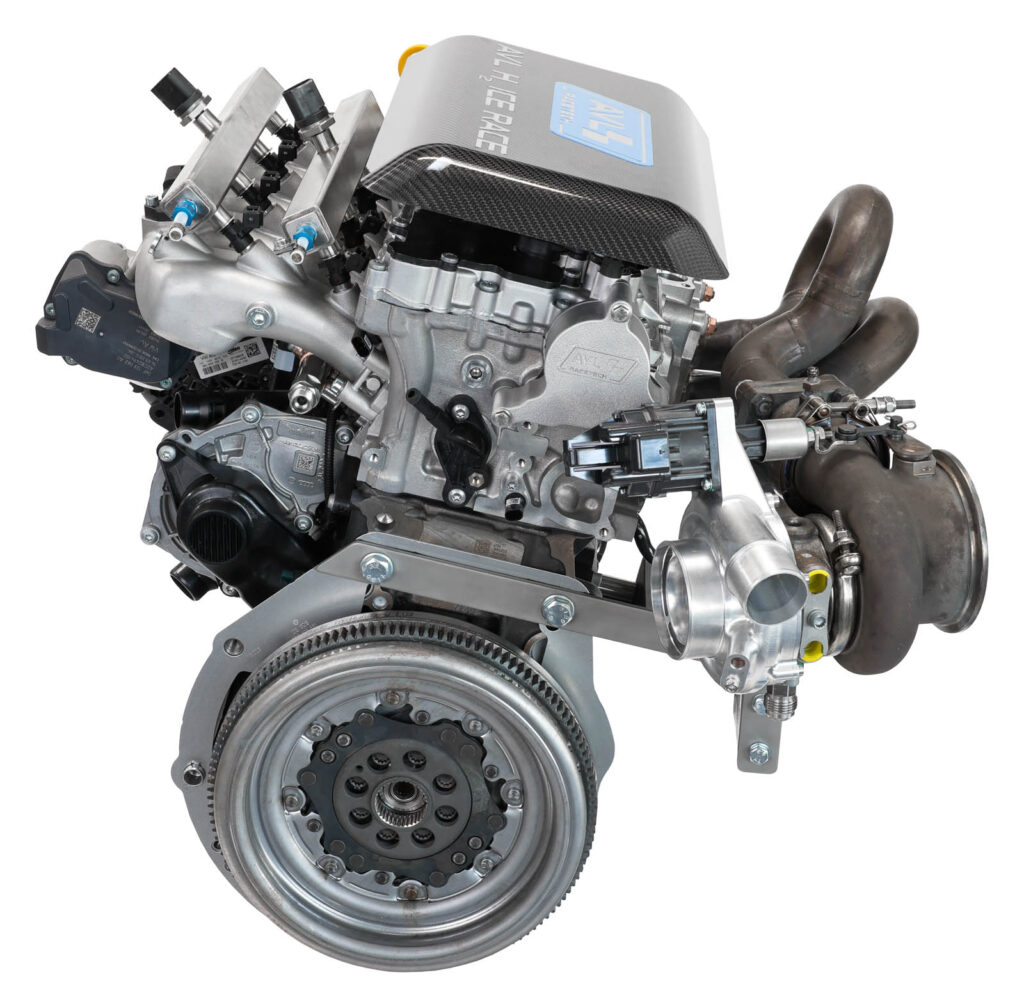
For example, there is no effect from the latent heat of evaporation of fuel within the chamber and thus literally no cooling of the chamber as there is no phase change taking place. As AVL’s Nilton Diniz, leading power development engineer at the AVL H₂ testbed, adds, “Running a hydrogen engine rich in terms of fuel does not have the cooling effect it does with gasoline. Being so reactive, it is prone to combustion anomalies and that is where you need the water. If you were to run a lambda 1 without it even at moderate output, you would permanently pre-ignite and probably also thermally overload your combustion chamber components.”
One notable area where H2 has the potential to show considerable efficiency gains over gasoline, even in a racing application, is the reduction in throttling losses that could be achieved. “With hydrogen, if you are running at low load points, it has the ability, even in a spark-ignited engine, to run very lean,” notes Diniz. “You can, for instance, de-throttle the engine and run it at lambda 3; from the combustion side it doesn’t care.”
Low load is of course not the focus of the racing engine, but for passenger applications this means that the main process loss with a gasoline engine – throttling losses – could be eliminated in driving scenarios where lean burn is applicable. Even for racing, the ability to save fuel, for example when running under safety car conditions, is a very attractive option as anything that can reduce either the fuel tank size or the number of refueling stops is welcome.
Minimal modification
“We did not need to do a lot in terms of the very capable base engine; things like the compression ratio turned out to remain pretty stock,” says Rene Heindl, senior development engineer for spark ignition engines. However, some areas did need modification to survive the rigors of racing, including the valvetrain. Here the production variable valve timing system is used, but on a modified cylinder head with uprated components, such as camshafts, finger followers, valves and the replacement of valve springs and hydraulic lifters (with solid productions), reducing weight, increasing reliability and enabling more aggressive valve lift on the valvetrain. The pistons (cooled as standard by oil jets), rods and crank are stock. Elements such as the head bolts have also been uprated to endure the higher peak pressures the engine is subjected to, though the standard cast-iron block is more thanup to the task at hand.
Some other standard parts have also been replaced, notably the inlet manifold, which has been manufactured in aluminum rather than the production plastic. “We redesigned that to improve the flow dynamics of the manifold and also as insurance against potential backfires, which could shatter the standard plastic intake,” explains AVL’s Nilton Diniz, adding that the exhaust layout also needed updating to achieve the targeted power output.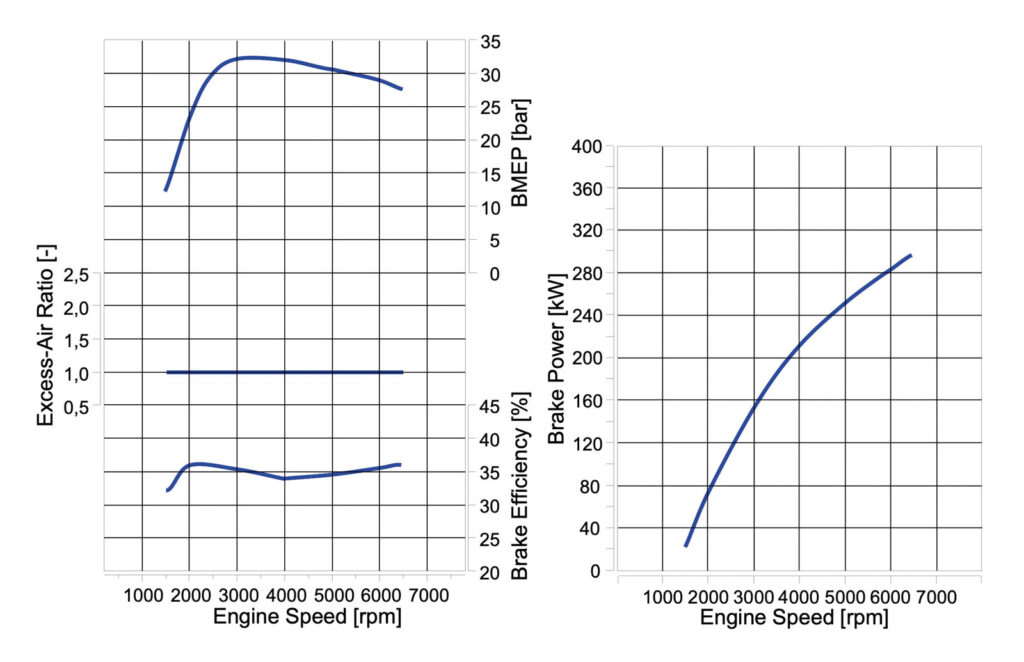
The future?
AVL’s H₂ racing engine is a marker in the sand from the company, proof of concept that a high-output, small-capacity engine is feasible for racing use. There is also scope for more performance to come, with the current 150kW/l output capped by mechanical limitations of components rather than the fuel choice. According to the company, with some component upgrades, a significantly increased output could be achieved.


